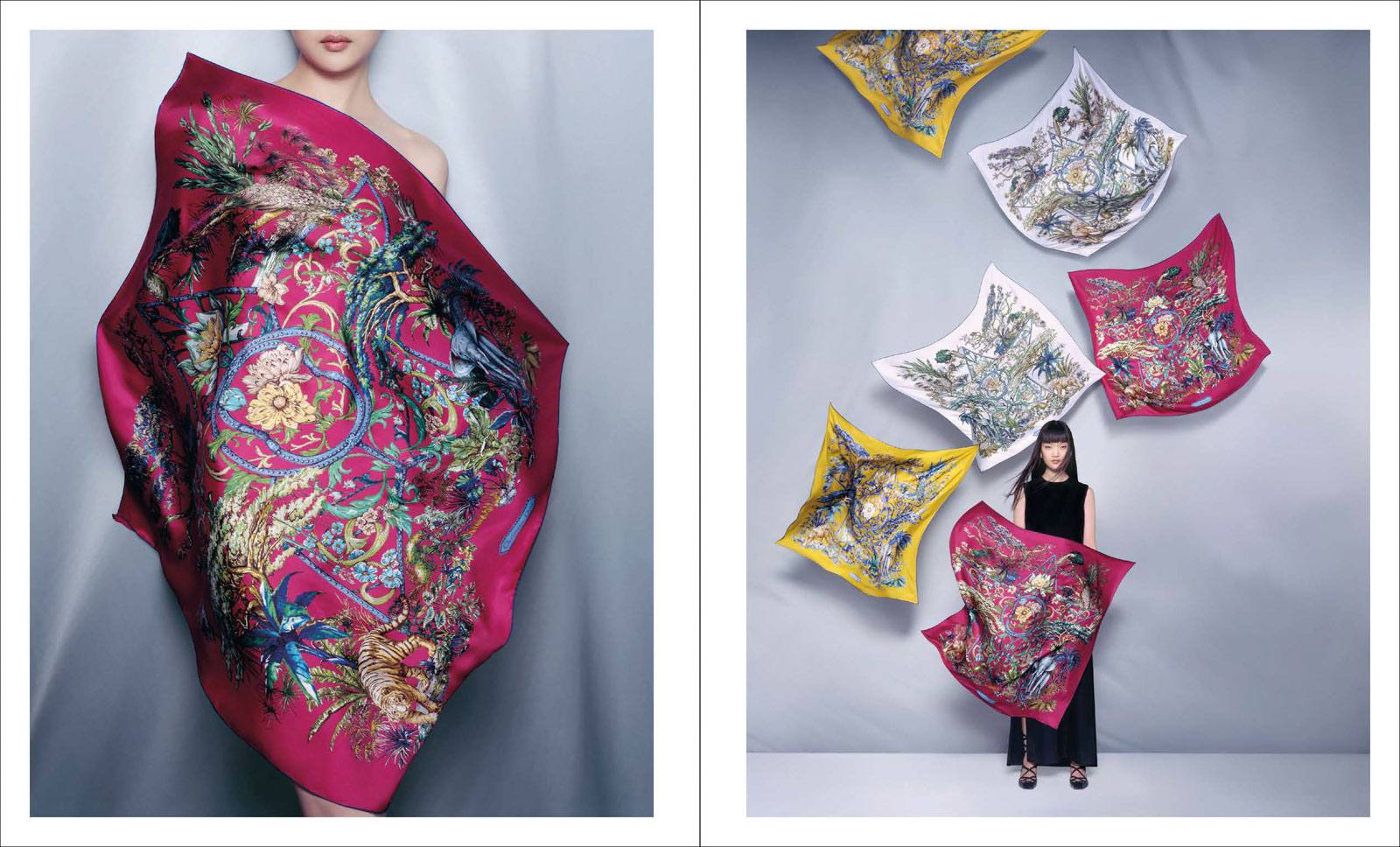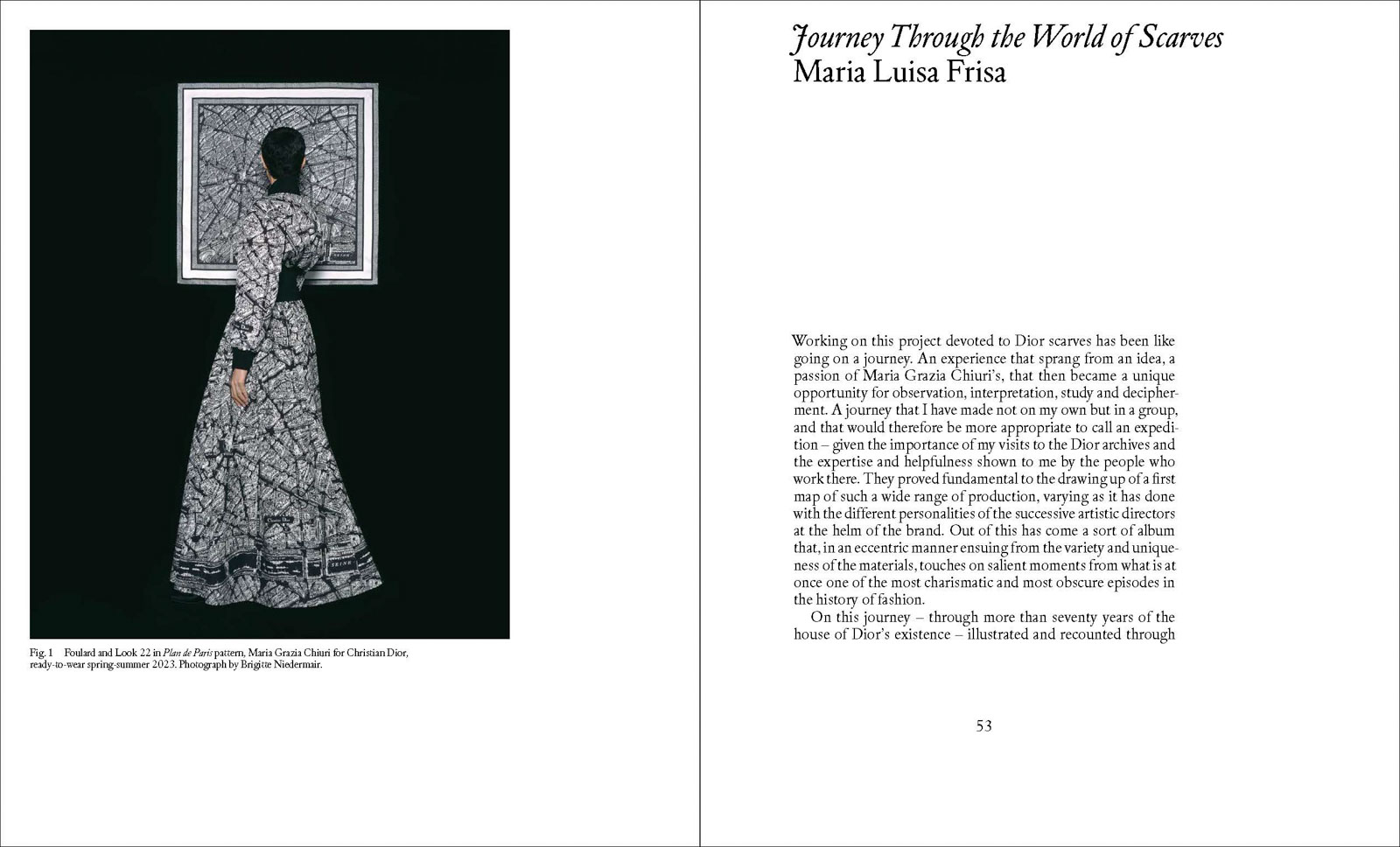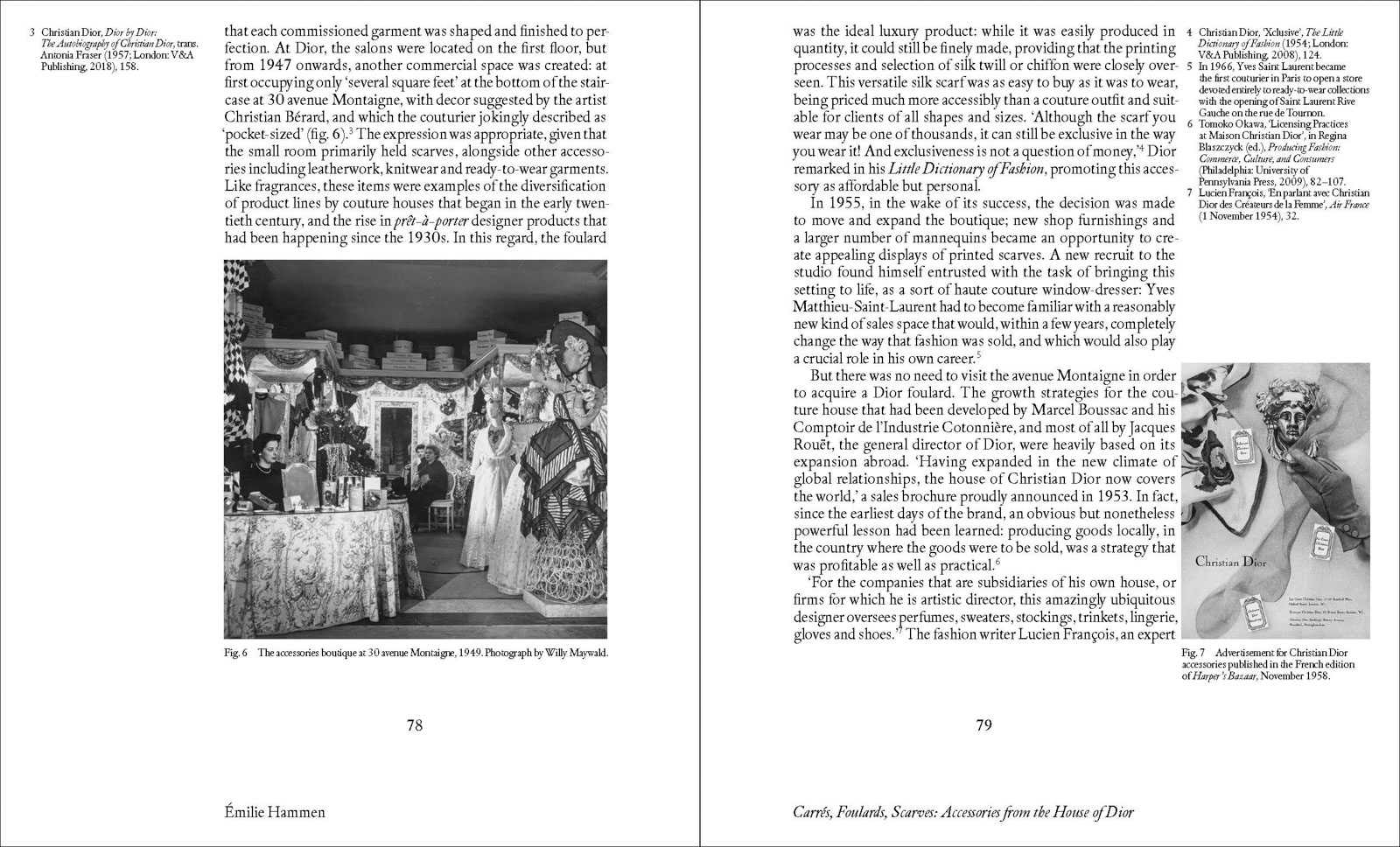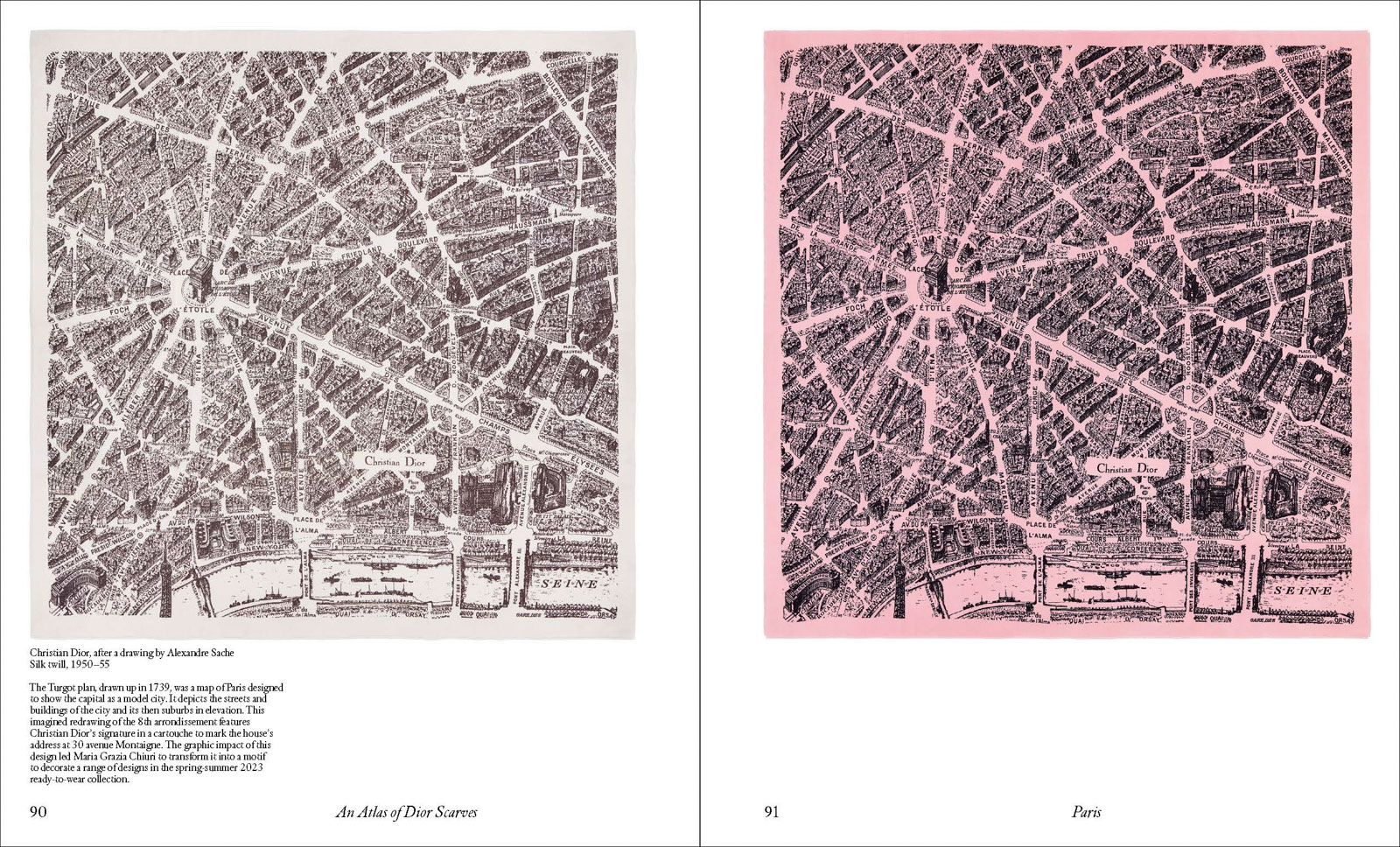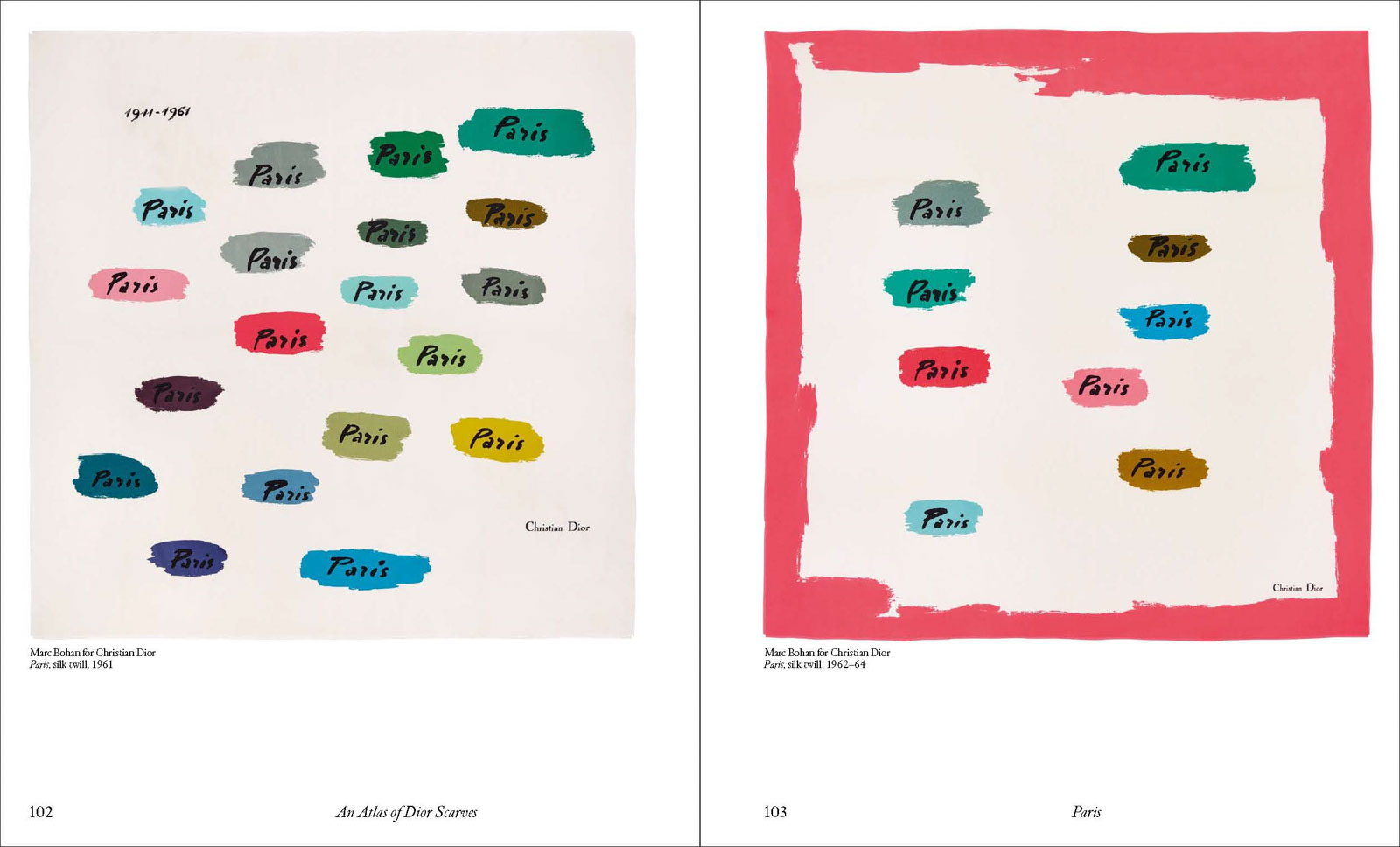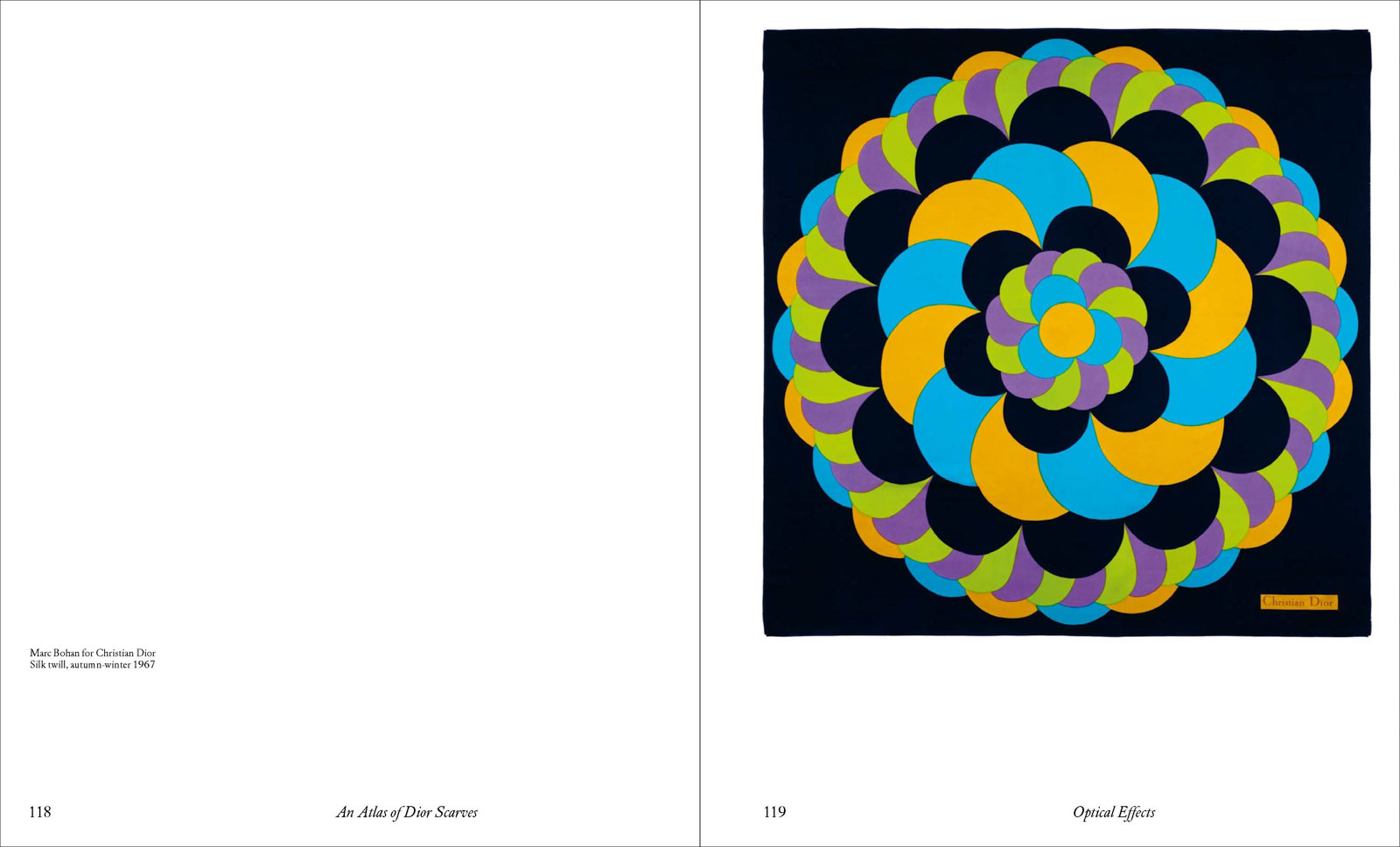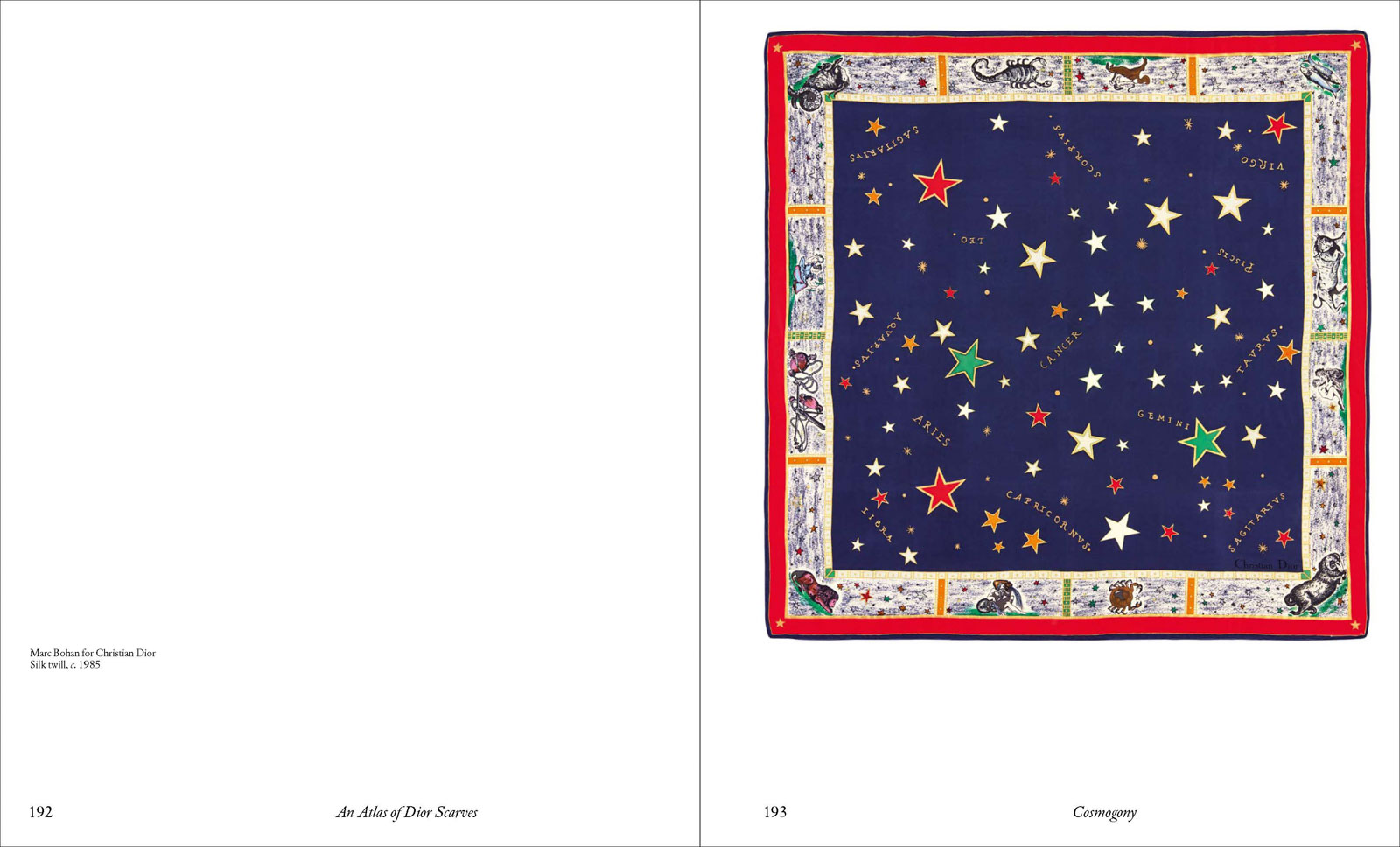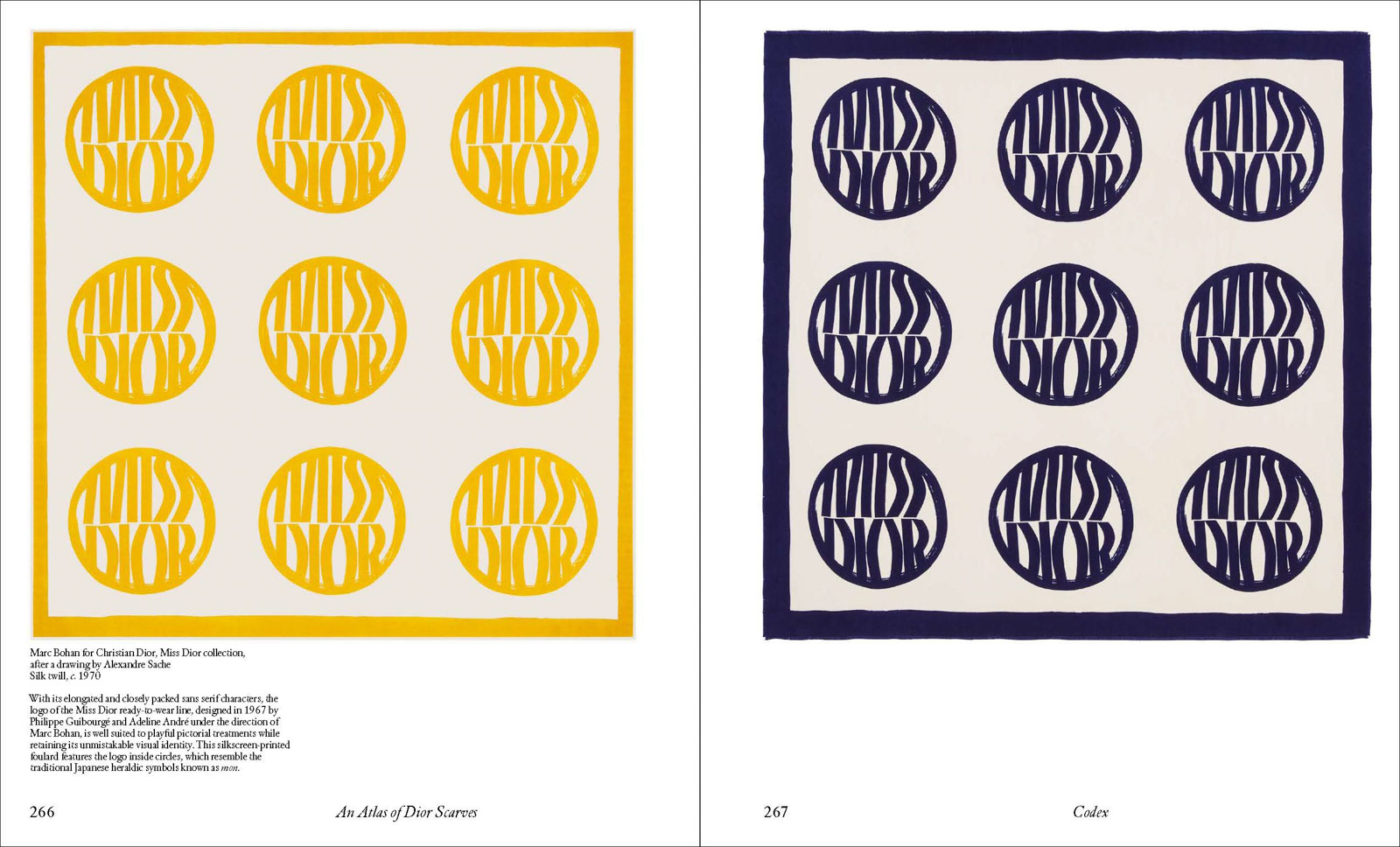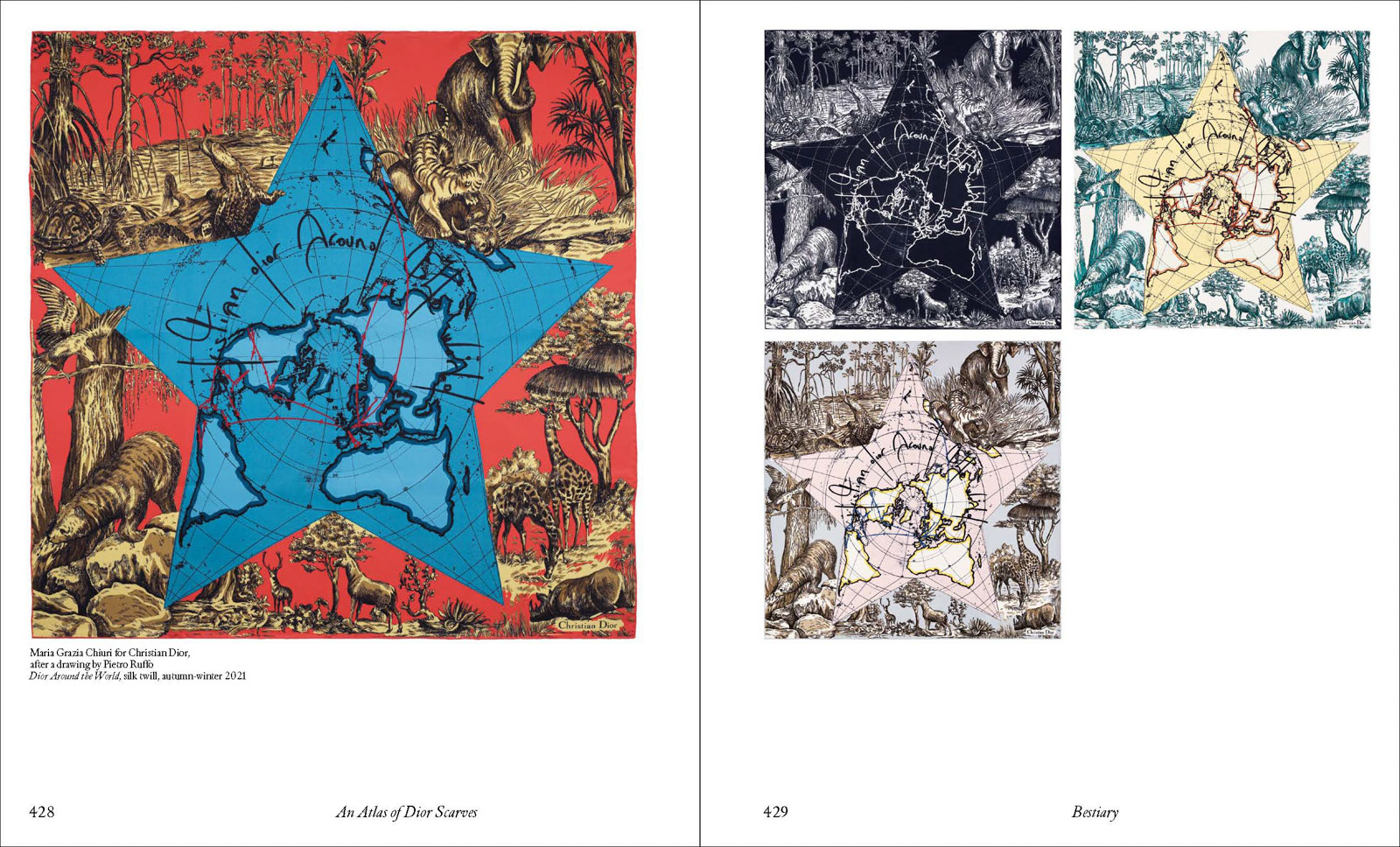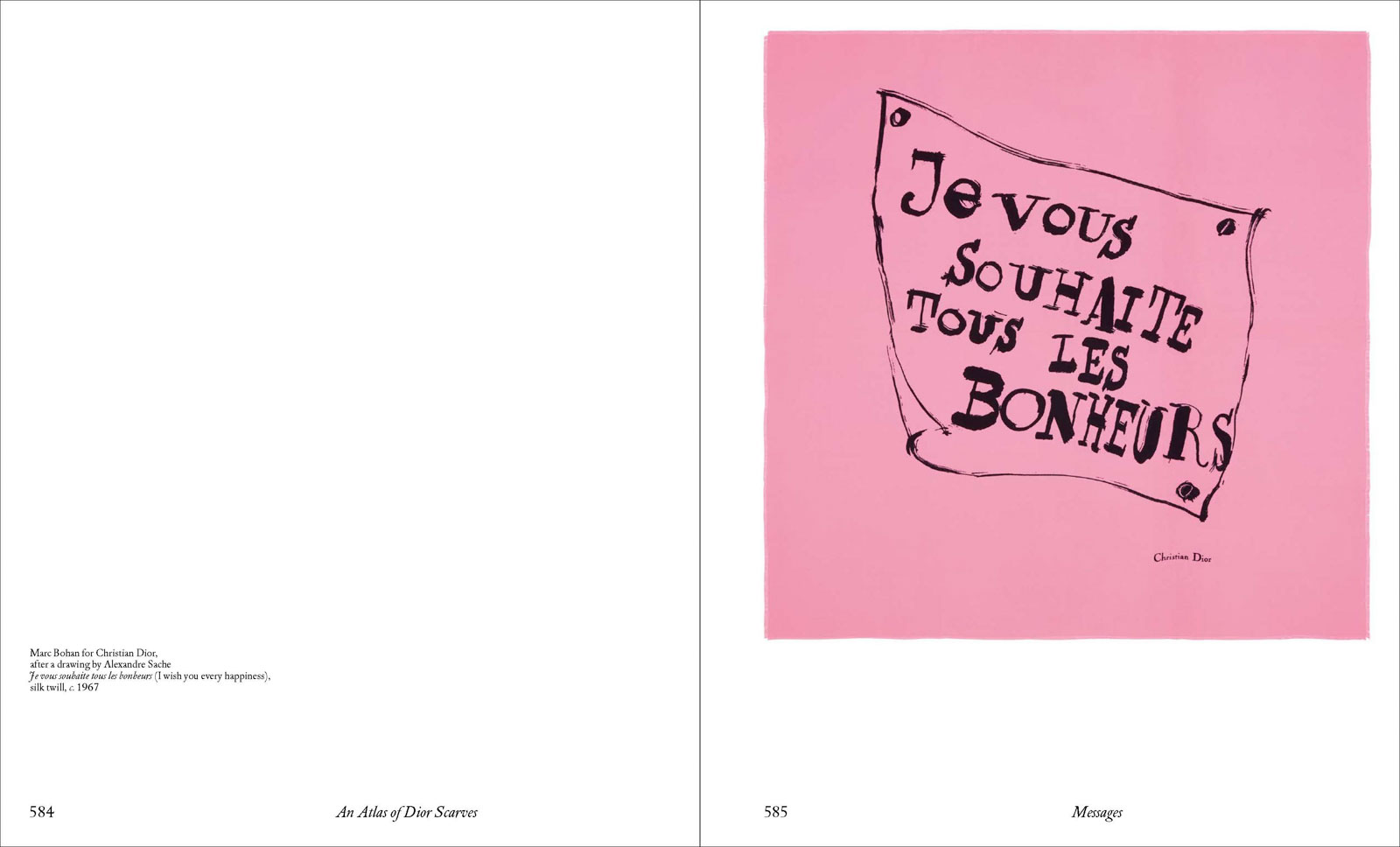Plain and elaborate, commonplace and precious, fashionable and timeless, masculine and feminine: Dior’s silk scarves form a unique visual repertoire and cover a gamut of palettes, themes, and styles. The epitome of Parisian chic, they express the poetic imagination of the creative directors who have shaped the destiny of the house, from Christian Dior to Maria Grazia Chiuri.
Unveiling the history and artistry of Dior’s scarves from the first designs to today, this sumptuous book celebrates their incredible variety and beauty as never before. At its heart is an atlas of over four hundred scarves, organized by theme and printed on a delicate paperthat replicates the texture of the scarves themselves. Dior’s creative director Maria Grazia Chiuri, who has overseen the creation of this volume, contributes a foreword. The atlas is supplemented by exclusive visual essays from renowned photographers Brigitte Niedermair and Pol Baril, as well as texts by distinguished fashion historians Maria Luisa Frisa, Claire Allen-Johnstone, Elda Danese, and Emilie Hammen.
From vibrant opulence to graphic harmony, every scarf conveys a mood and every one tells a story. Those stories are now brought together in a book that will delight all aficionados of this symbol of timeless elegance.
Reviews
Proves that every scarf tells a story.
— Forbes
Contributors
Maria Luisa Frisa
Edited By
Maria Luisa Frisa is Professor at IUAV University of Venice, where she founded the BA Program in Fashion Design and Multimedia Arts.
Maria Grazia Chiuri
Foreword By
Maria Grazia Chiuri has been Dior’s Creative Director since 2016.
Brigitte Niedermair
Photographer
Brigitte Niedermair is a renowned Italian photographer.
Claire Allen-Johnstone
Text By
Claire Allen-Johnstone is Assistant Curator of Textiles, Fashion and Furniture at the Victoria and Albert Museum, London.
Emilie Hammen
Text By
Emilie Hammen is professor of fashion history & theory at Institut Français de la Mode.
Elda Danese
Text By
Elda Danese teaches in the course of Fashion Design at the IUAV University of Venice.
Alberto Morini
Text By


